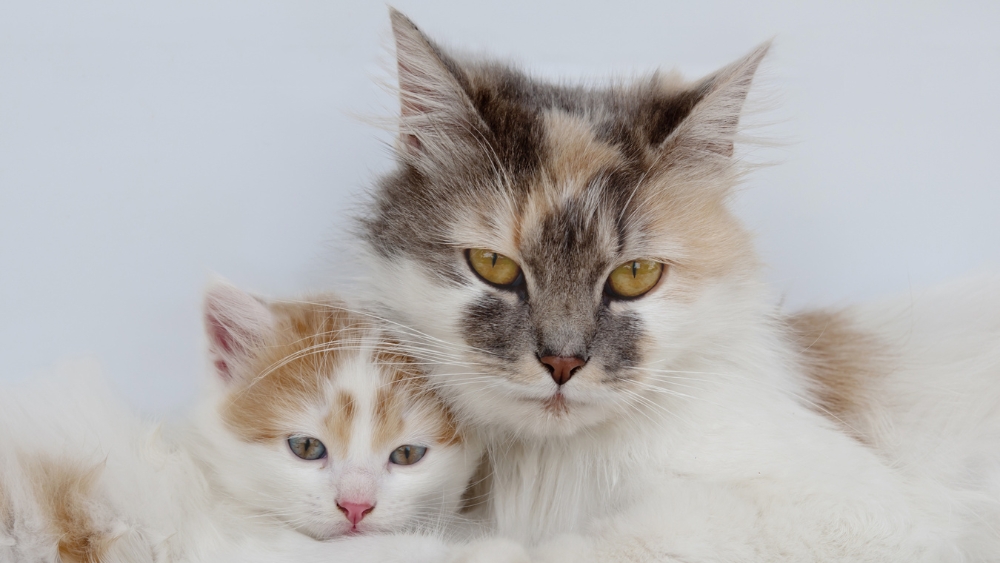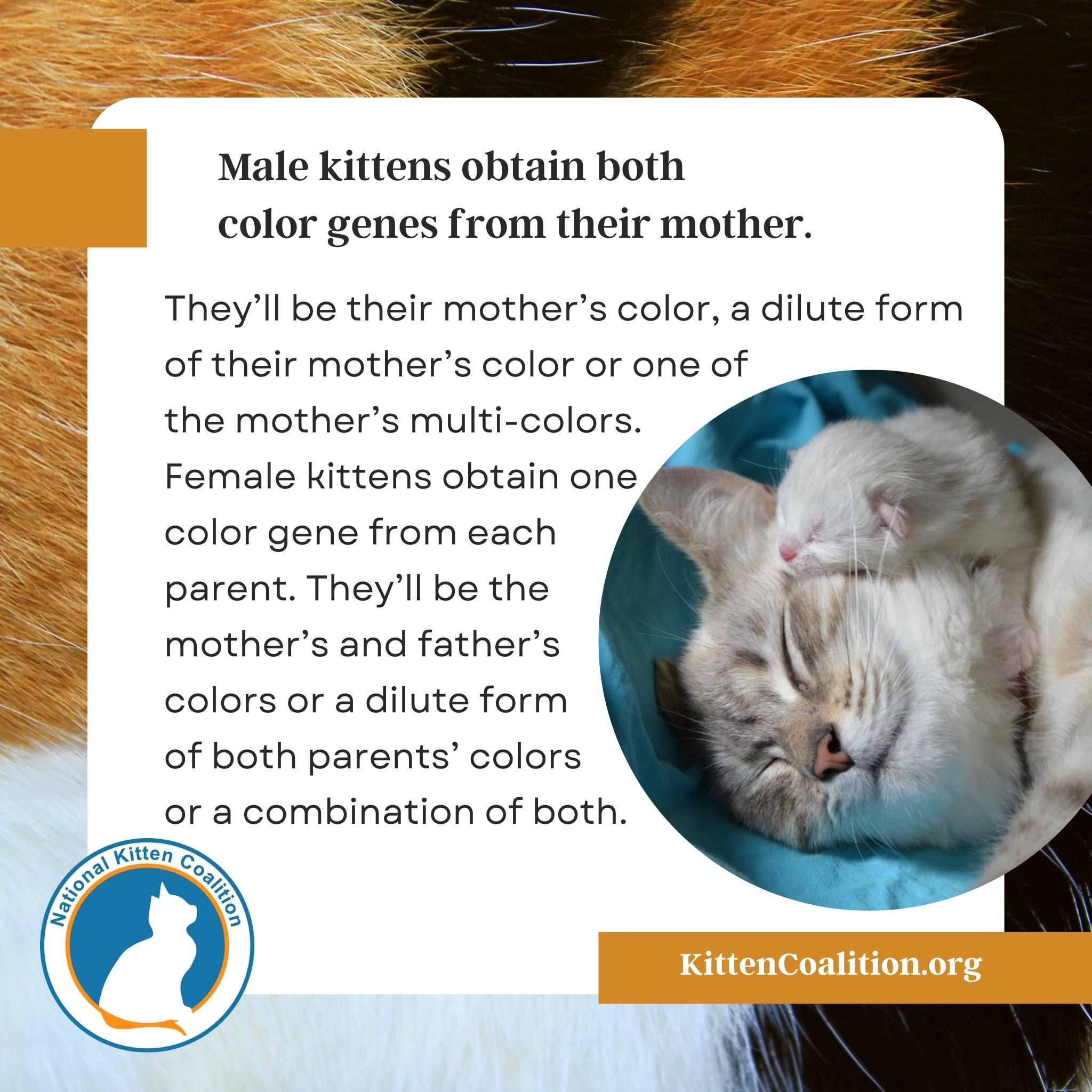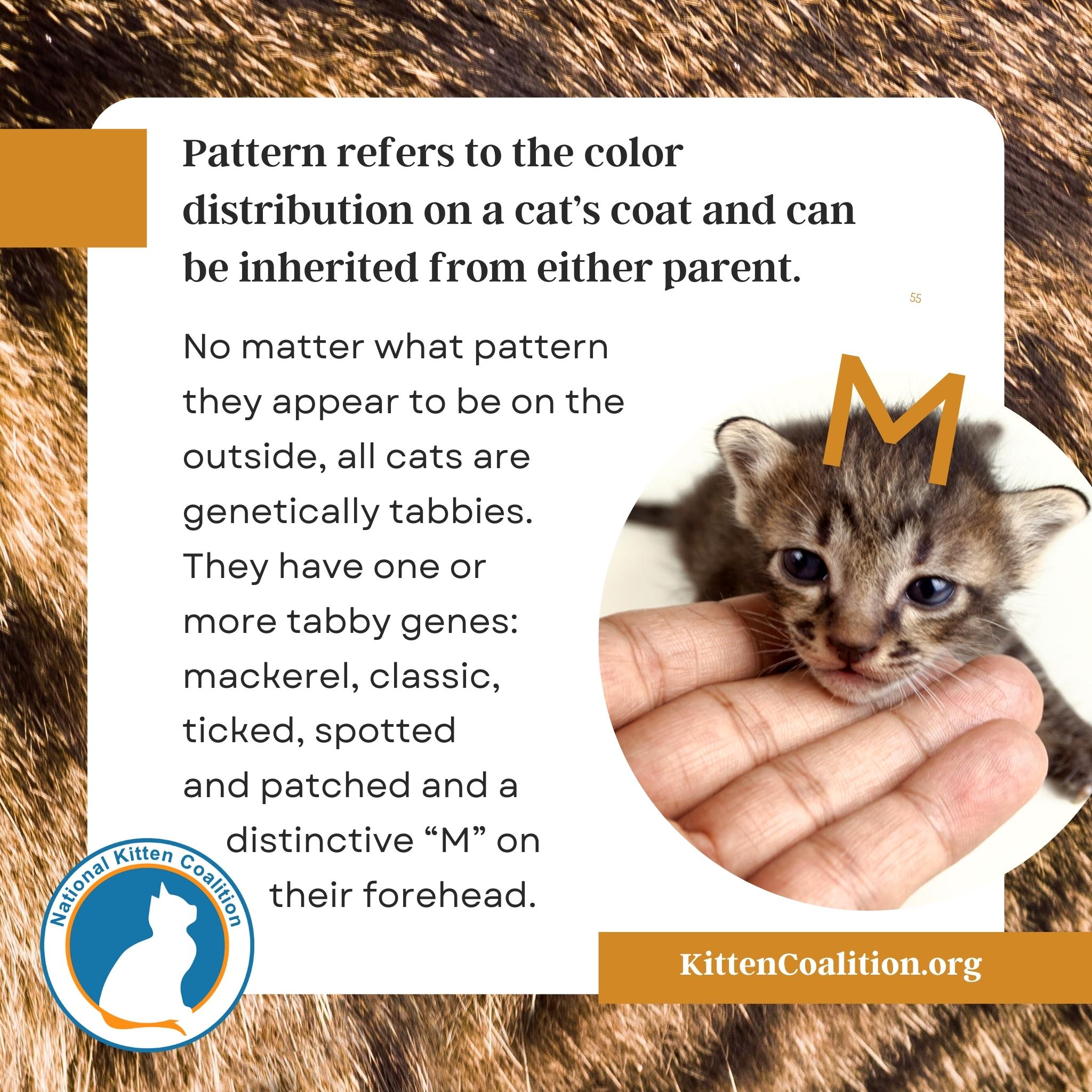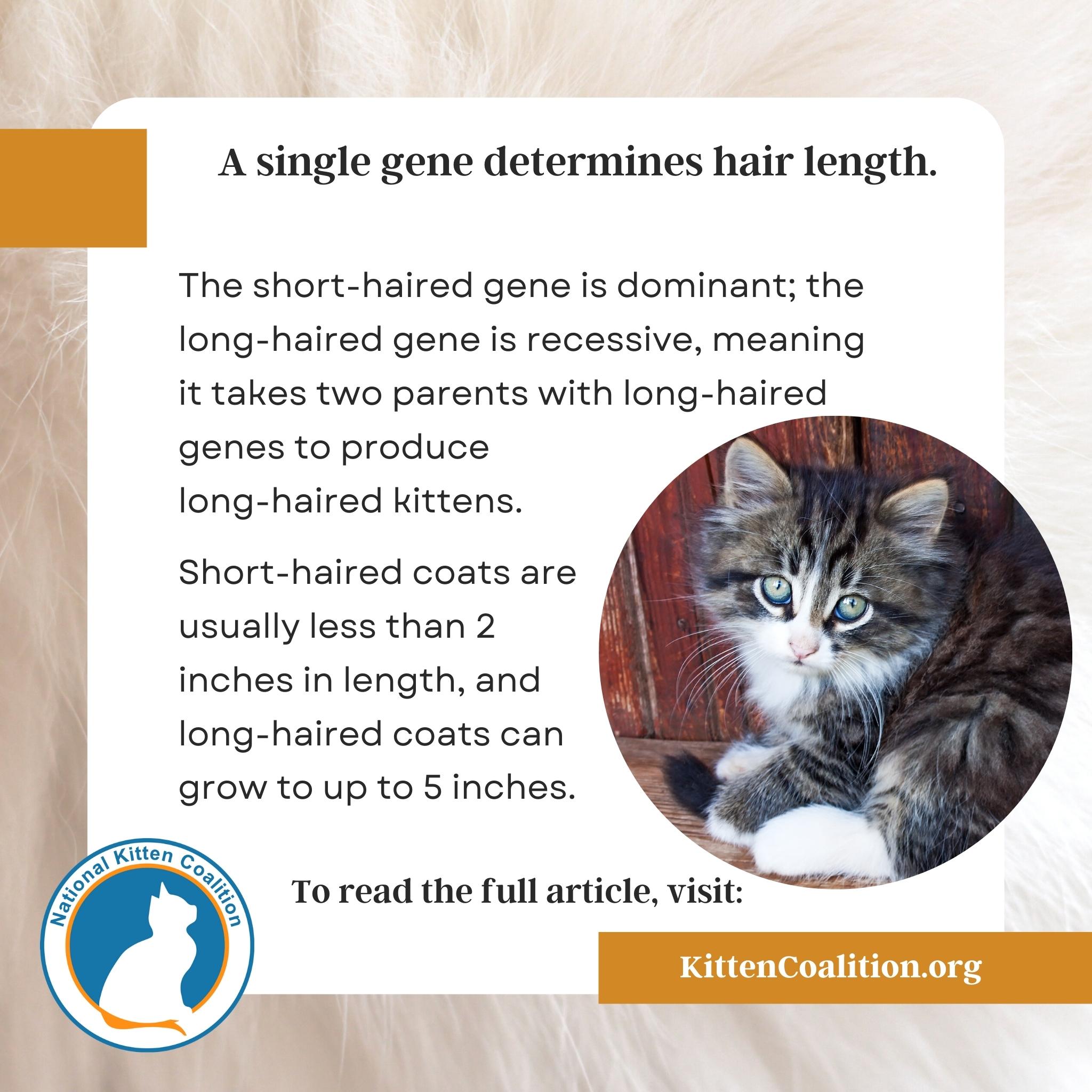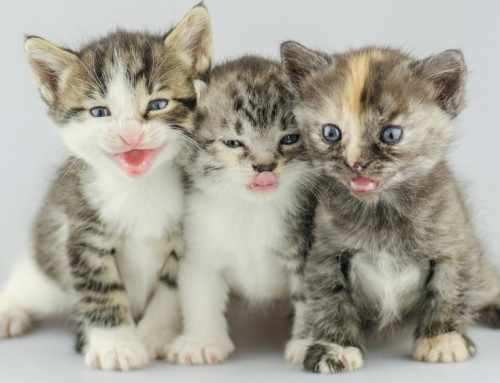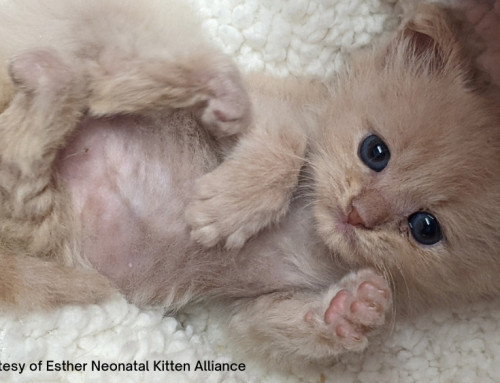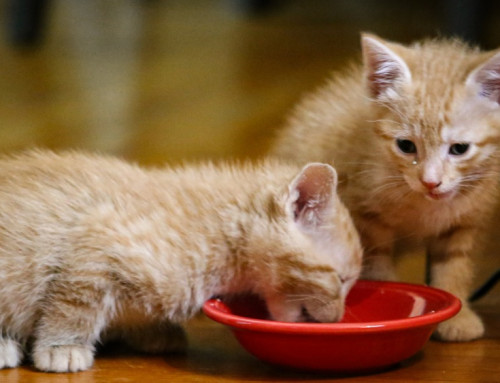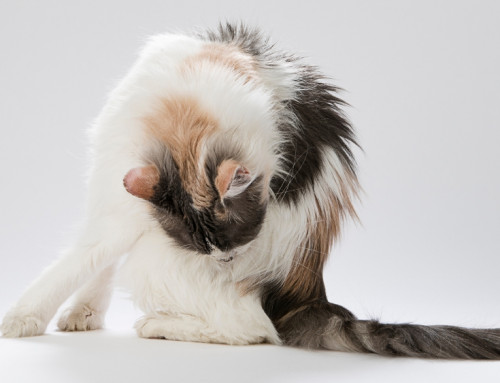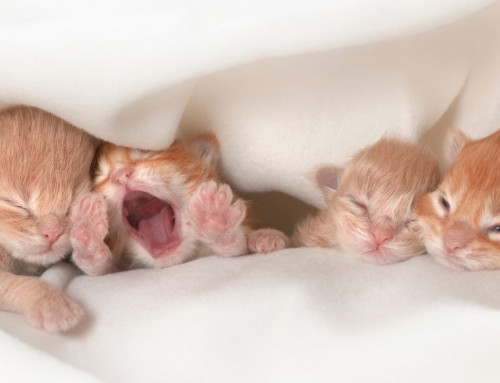Share this resource or email it to a friend!
In part 2 of this 3-part series, we discuss hair colors, patterns and lengths. In part 1, we discussed what hair is, types of hairs and how hair grows. In part 3, we discuss grooming.
Coat color is due to pigment in the hair shafts. White hairs lack pigment. Black (eumelanin) and red (pheomelanin) pigments, produced in cells called melanocytes, exist in the epidermis (top layer of the skin), and all cats, no matter what color they appear on the outside, are genetically black or red, or, in females, a combination. Other colors are the result of genetic factors or modifiers acting on these two pigments. Melanocytes can decrease with age and cause lighter hair color.
One or both parents’ genes, not the colors of previous generations, mostly determine a kitten’s color. However, pointed-colored cats (such as Siamese cats who have a genetic mutation that leads to a darker pigmentation in the cat’s cooler extremities of their ears, muzzle, tail and feet), bi-colors (white fur combined with fur of one other color) and white and smoke can be passed down between generations.
Male kittens obtain both color genes from their mother and will be either their mother’s color, a dilute form (a paler version of a color, for example black becomes gray) of their mother’s color or one of the mother’s multi-colors. Female kittens obtain one color gene from each parent and will be either the mother’s and father’s colors or a dilute form of both parents’ colors, or a combination of both. Some colors are more common, e.g., red males and tortoiseshell and calico females.
The amount of pigment distributed over the cat’s body is controlled by the pigment gene, the intensity of the color by the color gene and the density of pigmentation by the density gene. Any white fur on a cat who also has patches of colored fur is due to the white spotting gene. Different forms of this gene cause the white patches on calicos and the white bib on tuxedos.
Pattern refers to the color distribution on a cat’s coat. Pattern can be inherited from either parent. Some patterns produced by dominant genes will almost always be expressed in each generation. These include tabby (striped with an “M” on the forehead), tortoiseshell (mainly black and orange swirled in a brindle pattern) and color-pointed (solid pale cream or darker tan body color, with a different color on the ears, muzzle, tail and feet).
No matter what pattern they appear to be on the outside, all cats are genetically tabbies and have one or more tabby genes: mackerel, classic, ticked, spotted and patched. However, the presence of other genes can mask the tabby stripes. Black and brown tabbies are the most common cat color.
Although colors and patterns are determined by a combination of genes, a single gene, FGF5 (fibroblast growth factor 5), determines hair length. Short hair is the dominant code in the gene; four mutations of the gene produce long coats. Three of the mutations are fairly breed specific; the fourth is present in all long-haired cat breeds and random-bred cats.
The short-haired gene is dominant. Therefore, two parents with short-haired genes produce short-haired kittens. A mating of one parent with a short-haired gene and the other parent with a long-haired gene isn’t likely to produce long-haired kittens because the long-haired gene is recessive. It takes two long-haired parents, or two parents each carrying a long-hair gene (which means the cats themselves appear short haired), to produce long-haired kittens. The anagen phase, when hair is growing, is prolonged in long-haired cats.
Short-haired coats are usually less than 2 inches in length, and long-haired coats can grow to up to 5 inches. “Hairless” cats only have baby-fine hair. Curly-haired coats, caused by a recessive genetic mutation found in a few cat breeds, such as Devon Rex and LaPerms, can be short or long and loosely or tightly curled.
No matter the color, pattern or length of a cat’s hair, grooming is important to keep it healthy and looking its best.

